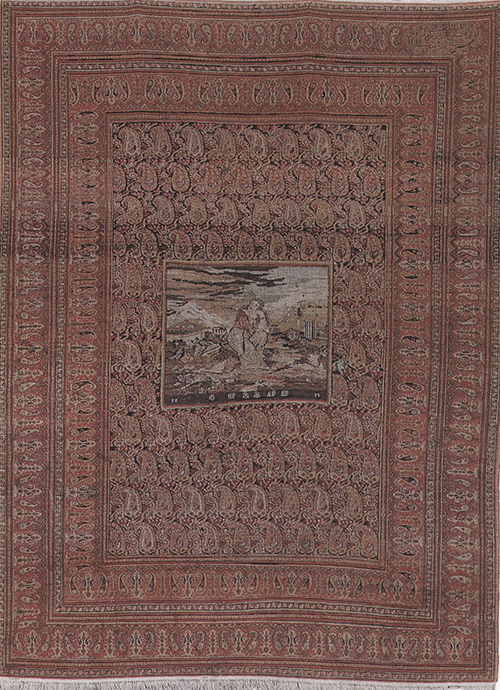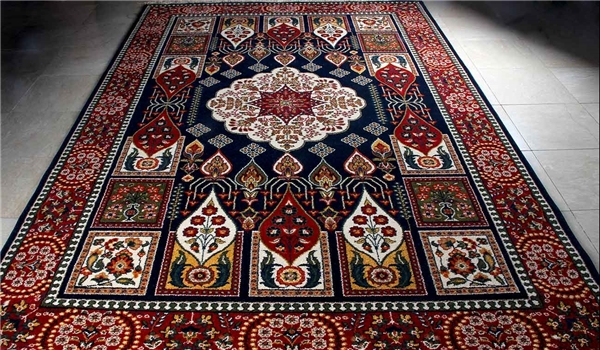
Lower the carpet:
The lowering of the carpet should be done with sufficient skill so as
not to diminish the quality of the carpet. The carpet will be lowered or rotated
on the rug when the weaver has woven part of the rug and the height of the woven
work reaches a point where the weaver does not have sufficient mastery to
continue working, at which time the woven part must be moved down the machine.
Carpet trimming is done according to the plotting done. If Persian (asymmetric)
truncation is, the truncation will be Farsi and if the truncation is Turkish
(symmetrical) the truncation will be Turkish.
Symmetrical carpet downs:
The semi-woven rug lowering procedure removes the wedges inside the
groove below the sardine to release the sardine and grooves, pulling the woven
part down and the woven back material. Transmitted. Then adjust the bushes on
the sardine which are disrupted by the sagging at a certain interval and then by
placing the wedges in place, the sardine is raised and the bushes are positioned
first and the bushes are examined at the end. So that they don't overlap.
Asymmetric carpet downsizing:
After the woven length reaches about 50 to 70 cm, the woven part must
be moved down to the machine for better control. The way to lower the pockets in
the tissue holders is by first opening the pockets on the pockets to release the
pockets. By keeping the dimensions on both sides and in fact the spacing of the
staves, they bring the woven part down to the bottom edge. In the next step, the
extra sticks are tied back to the sardar again and fastened to the sardar as
they were before, and after the woven part is moved down, sew the rug to the
underside. After the stitching process is completed, the staves are arranged
initially, adjusting their spacing and elongation, and by placing the wedges in
place again, the stakes are firm and ready to weave. The most important point to
note here is the amount of pulling the staves. Unless the bends are stretched,
or if some bushes are loose and some are stiff, the knots will not be uniform on
the cords, and the pads will not be arranged neatly between the cords and the
knots.
Cut the woven rug from the hanger
Once the main tissue is finished, the end of the work is knit like
the beginning of carpet, headboard or carpet, and finally the last node is
closed at the end of the carpet. Some weavers use boat knots and two knots to
tighten and seal the carpet according to personal taste. After this, the
scissors cut the root of the carpet and move it down to the device to do so
first by removing the wedges below the vertical slot to release the carpet and
then the longitudinal size of the roots between the carbs. Determine the first
to the second with the meter and divide it by two and scissors the middle of the
roots horizontally. Finally, after the procedure, they cut the rug on the floor
and trim the roots. To do this, select the roots in batches and tie them
together. This action also strengthens and prevents the part of the carpet
weaving from collapsing, giving the beginning and the end of aesthetic work.
Tools needed to lower the carpet:
1.Scissor: A tool for removing sticks, yarns, towels and any extras
that appear on the carpet surface. They use scissors to cut the straps of the
primary and secondary stitching carpets that were cut at the time of carving and
to cut the stitching stitches that were struck on the straps when the carpet was
lowered.
2. Nailer: This metal tool is used to remove fine nails that are crushed on the
rug and undercarriage when pulling down the rug. They use nail polishers to
remove nails from the top of rugs and carpets. Care must be taken when pulling
the nails of the woven rug to the underside. Any mistake in pulling the nail or
wrong in cutting the belt with improper use of scissors and nail may damage the
carpet causing loss of quality and economic value of the carpet.


